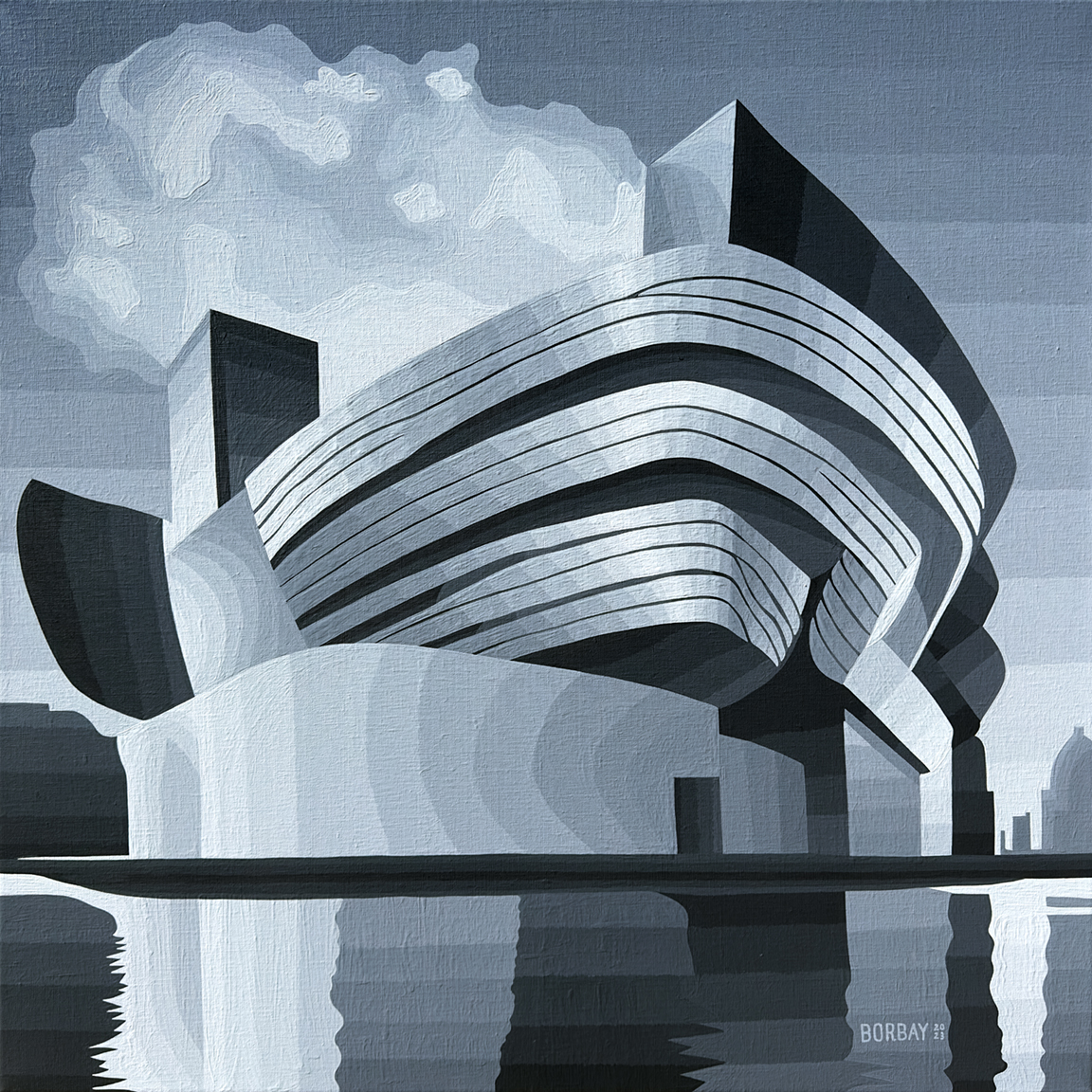
Artificial Intelligence. From the moment I heard Ray Kurzweil speak about A.I., futurism and singularity in NYC in 2013… I’ve paid close attention. And friends? I can tell you… the impact of Artificial Intelligence will alter humanity more significantly than the internet. Fittingly, when it was time to create the 15th Guggenheim in my 20-Year-Series… I chose to dive into Artificial Intelligence, and explore it’s significant impact on creativity and copyright.

Earlier this year, I found myself in Brooklyn, producing Lucas Lowman’s debut art exhibition — “The Lost Found“. Lowman creates A.I. imagery based on his poetry. He enters his prose into various platforms, like Midjourney, and provides instructions via prompts to deliver the desired image. Taking a page from his creative process, I snapped this photo of Frank Lloyd Wright’s masterpiece, logged into Tome… and began to create.
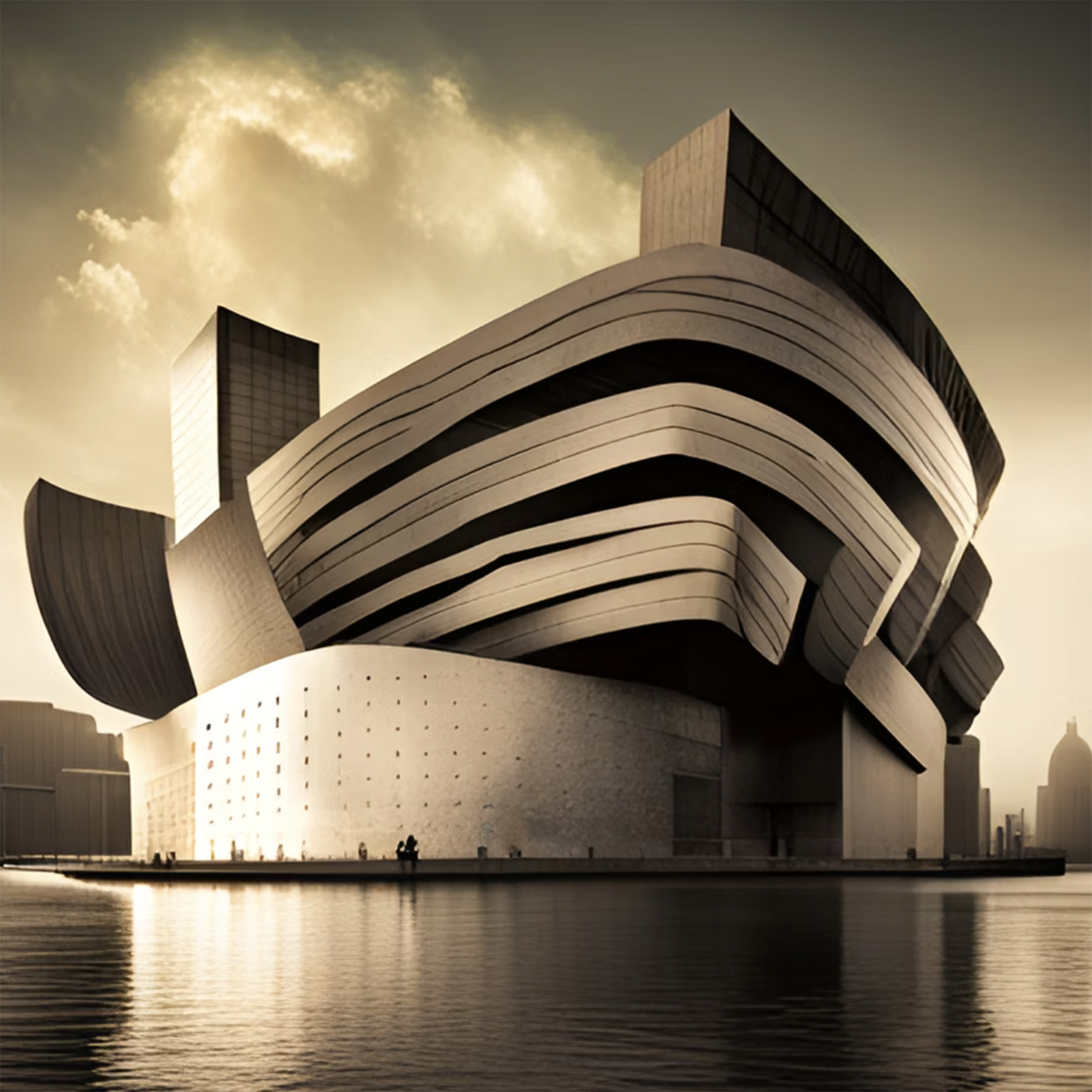
Through a series of prompts, Tome offered a dozen potential images. I spent 24-hours contemplating which I enjoyed the most… and this crept into my minds eye. Human deliberation and selection. So, I set-out to create Guggenheim 15, based on an A.I. image, generated from my photograph, and coached by my prompts. This… of course, is a new frontier. The courts have taken notice.
“A work of art created by artificial intelligence without any human input cannot be copyrighted under U.S. law, a U.S. court in Washington, D.C., has ruled.” This is big news. Wired has published a work-of-art created by Matthew Allen without consent, because of this very ruling.
And it begs the question… was my process “transformative” enough to establish a new piece of Intellectual Property? It is based on a photo taken by yours truly, altered through Tome, prompts, deconstructed and reconstructed on canvas.
As for my stance? I hereby declare, the Artificial Intelligence Guggenheim is 100% mine. Will this be challenged? I welcome the debate.

The process itself is transformative. The image is stripped to it’s basic form, shadows first, and laid out in black-and-white. Incidentally, I used Mars Black and Titanium White for this work.
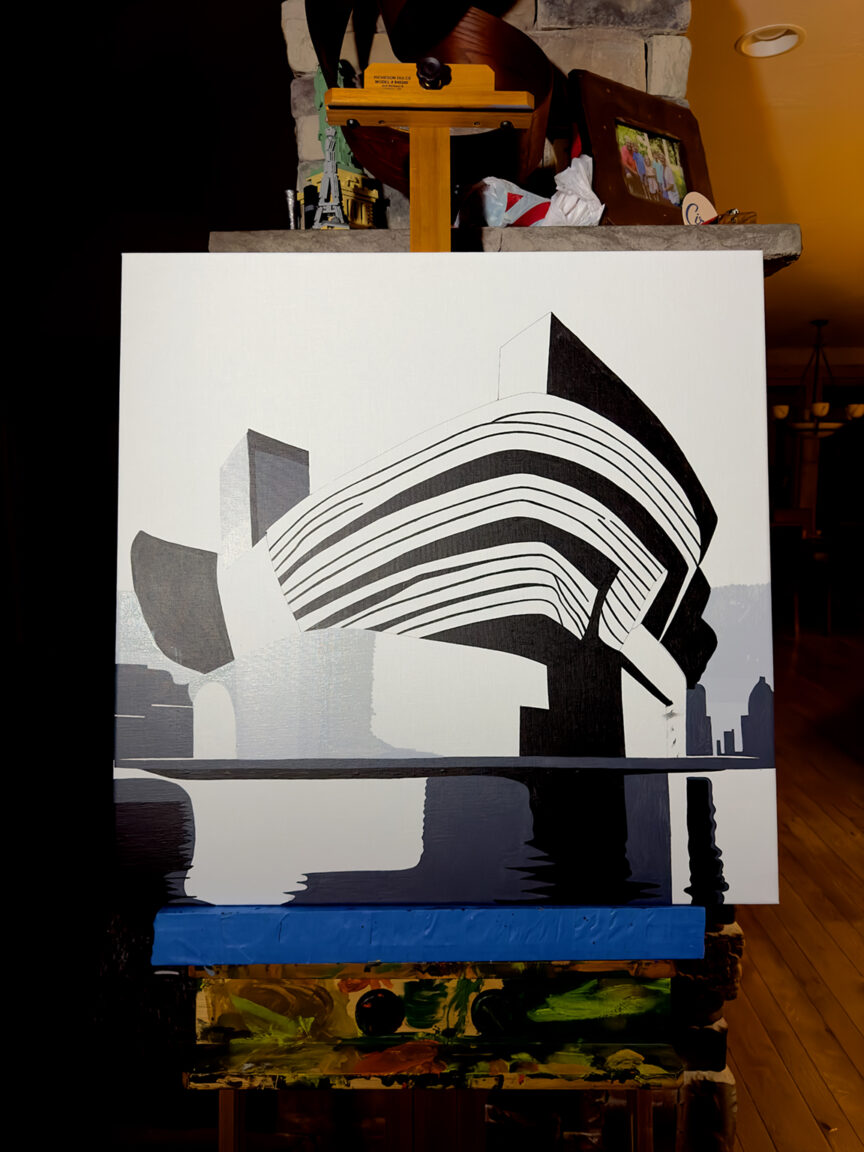
From there, I began to flesh out the secondary shadows, and then identified the first mid-tones.

One thing I noticed while painting, was a palpable sense of unreality. I liken Artificial Intelligence imagery as a window to our dream state. I dream nightly, and often find myself in a proxy of New York City. I can feel it’s Manhattan, but everything is different… distorted. A.I. delivers images that feel like something, but alters them in a dreamlike state. This concerns me. It’s as if A.I. is learning human intelligence from our dream state, outward. This summer, at our Member Guest Golf Tournament, I asked an attorney, “how close is A.I. to making video and photographic evidence inadmissible in a court of law?”
He didn’t know, but agreed… this is a serious potential reality. Deepfakes are increasingly more difficult to tell apart from reality. Imagine being an attorney representing someone caught, on film, murdering five people. As a strategy, you create an incredibly plausible deepfake of opposing council murdering five people. Yes, other evidence will come into play… but this is no small ripple… it’s a wave (I say this with thanks to “The Coming Wave” by Mustafa Suleyman).
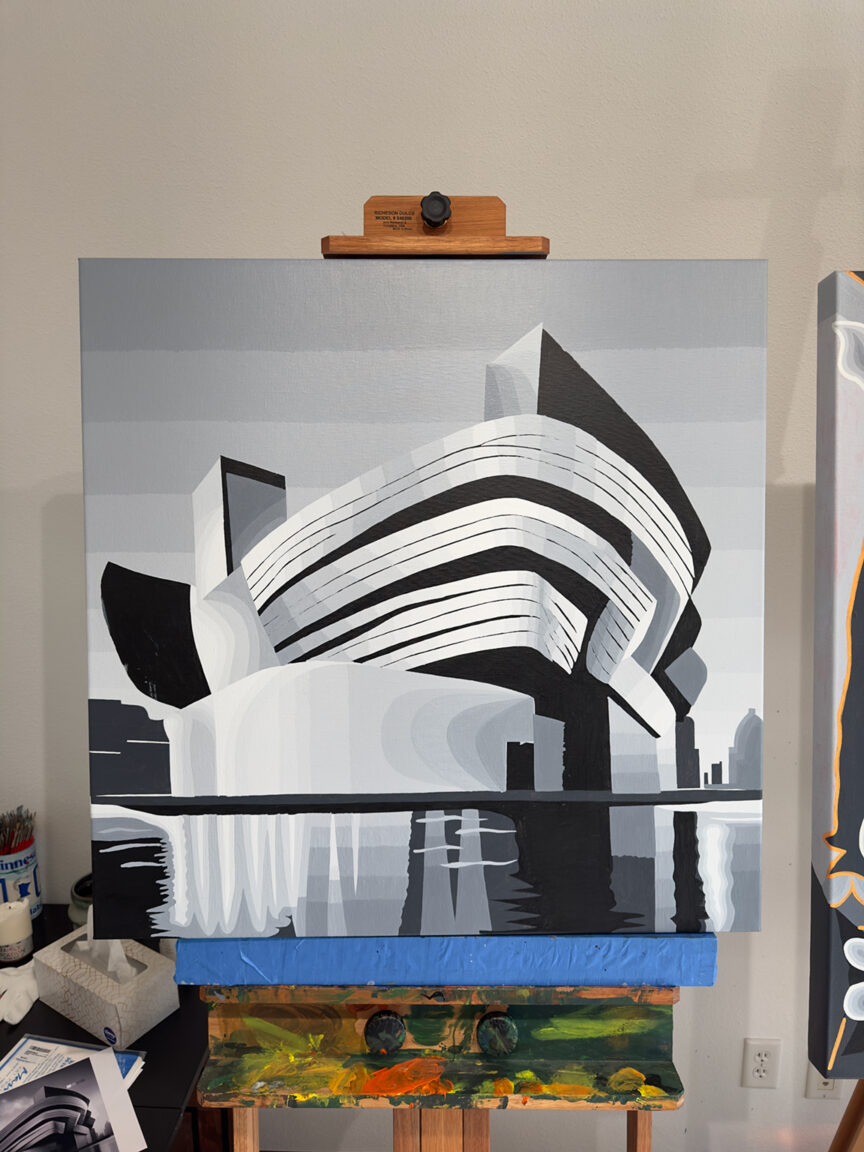
With each tone, the image begins to emerge. For whatever reason, I took a bright approach to the first pass… everything was light.

Here, I was feeling the painting was getting close… and I debated on adding the clouds… in the end? Cumulus won out, and were quickly sketched-in.

The clouds not only helped balance the composition… they made me realize the tonality of the entire canvas was off. And so, in a rare move, I set-out to re-paint everything.
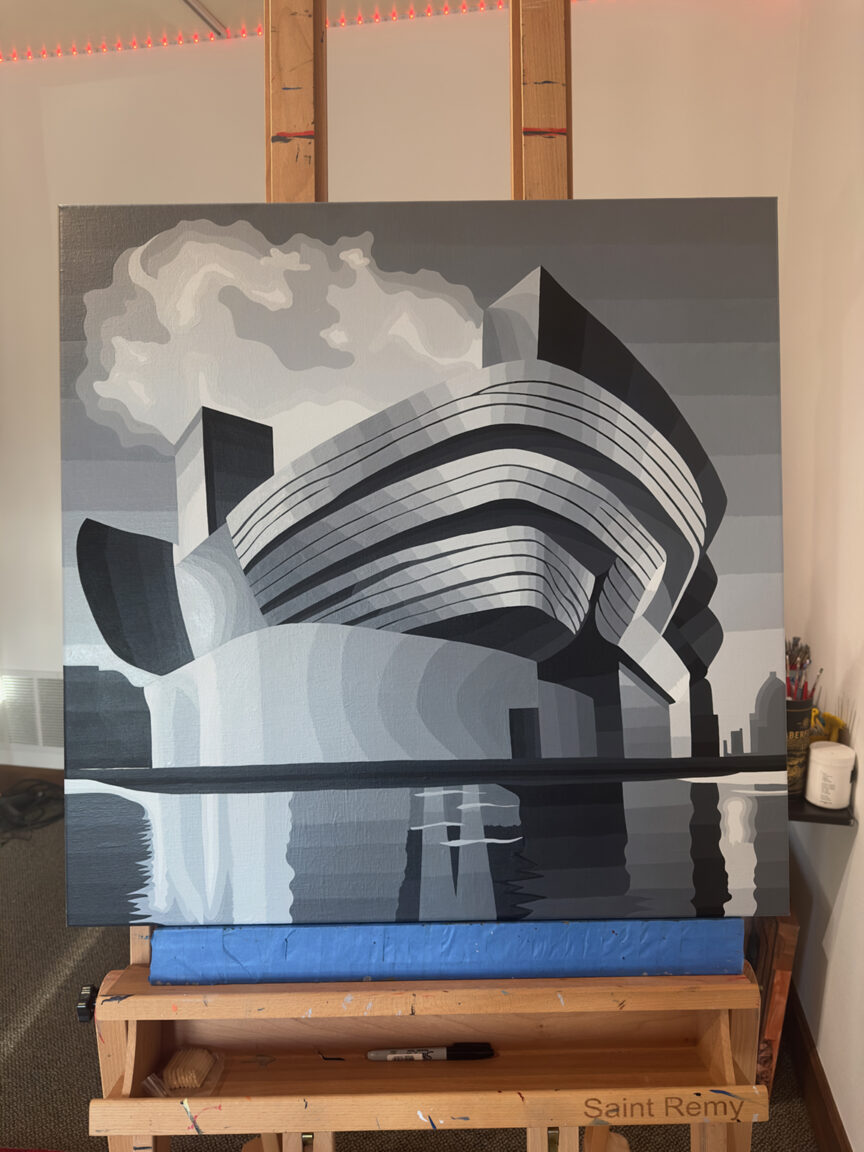
As you can see, the work shifted significantly. I wanted to articulate the slightly off line work and shapes generated by A.I. Man. Machine. Man. Man. Man.

And so, with the final strokes, the Artificial Intelligence Guggenheim was signed. Creating this in concert with Neon Guernica, it opened up a new channel of thought, and potentially, a bold new process for crafting an image. Will this prove, over time, to be controversial? I welcome the waves, and would love to hear your thoughts. Is this transformative? Should A.I. created work, with human intervention, be copyrightable? How far are we from A.I. declaring personhood, and subsequently challenging The Supreme Court?
Buckle up… we’re in for an incredible ride… and intellectual property is the tip of the iceberg.
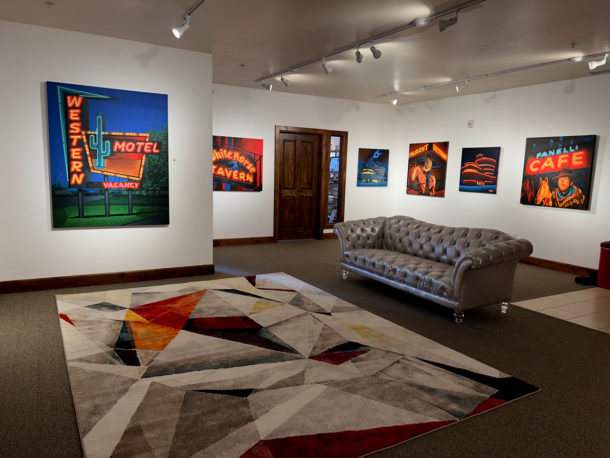

Become a Borbay V.I.P.
You'll be first to hear about new works, pre-sale's, market updates and much, much more.
Welcome, I appreciate you, and can't wait to share the biggest news from Borbay Studios & Gallery!
You'll be first to hear about new works, pre-sale's, market updates and much, much more.